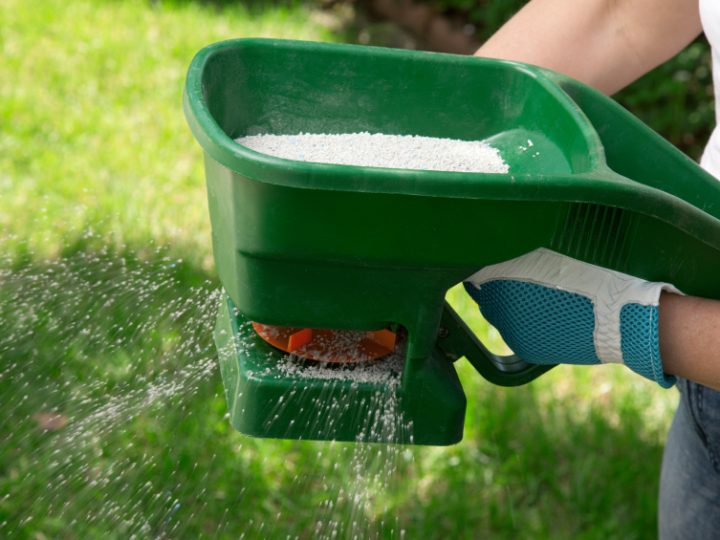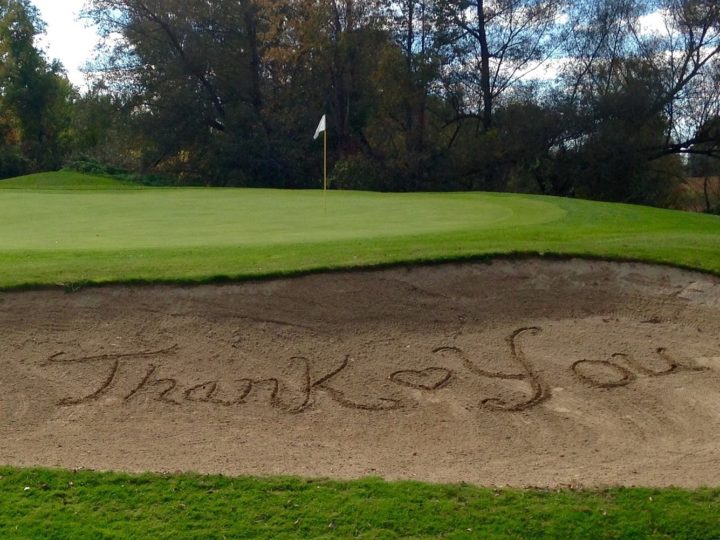
At the heart of traditional lawn-care is topdressing. In the words of the venerable Royal Horticultural Society:
Top-dressing is the application of loam, sand and well-rotted organic matter to a lawn in order to correct surface irregularities and improve the texture of difficult soils. This encourages greater rooting and thickening of turf.
Top-dressing can be done with soil, sand or compost, but ideally it should be done with a mixture of all three. One recommended mix is three parts soil, six parts sand and one part compost, but other recipes are easily found. Ready mixed materials can often be purchased in bags or in bulk depending on the lawn area.
The usual rate is 2-3 Kg/m2. This translates into a covering of around 1cm.
The material is spread evenly over the lawn (which is much easier to do with dry material) and raked or brushed down into the turf so that grass is still visible. Never apply so thick a layer that the grass is completely covered.
One claimed benefit is the correction of surface irregularities. However, given that the covering is only 1 cm thick, only very small irregularities will be dealt with. . Filling in deeper hollows with soil will simply create areas with no grass on them. Anyway, any deeper hollows should be corrected by lifting the grass and raising the soil-level underneath and then re-laying the turf. Also, unless the top-dressing is very carefully levelled, which can be difficult to do, it will simply create new irregularities.
The second claim is that the soil texture will be improved and a stronger grass root system will develop. Now this is impossible. The root-zone of grass is around 20cm deep. To change the soil texture from a clay loam to a sandy loam, for example, means increasing the percentage of sand in the soil by around 20%. That would mean adding 4 cm of pure sand and working it into the root zone. Top-dressing with 1 cm of sand laid on top will have no effect on the root zone at all. The layer of sand will improve surface drainage somewhat but any rooting by the grass into that zone will make the root system shallower and more prone to drought damage.
If you have a clay soil, aeration is a good practice that you should carry out regularly. The Yeoman Lawn Aerator is a good tool to use for this purpose.
Furthermore, there are some significant negatives to top-dressing. The first is weeds. Any introduced soil will contain a lot of live weed seed, which will happily germinate on your lawn and develop a nice, new weed population. On professional lawns that are treated with herbicides frequently this is not a problem, but as home gardeners move increasingly to using fewer chemicals they now need to apply a herbicide to remove the weeds they introduced themselves. Pure sand contains no weed seeds, but putting sand on the lawn may well increase drought stress.
The idea that lawns need organic material is a false one. Grasses have an annual root system. This means the old roots die in late summer and are quickly replaced by new roots. The old roots contribute copious amounts of organic material to the soil, especially in combination with the accumulation of clippings that will occur even if the majority of them are collected. The soil beneath turf was always favoured for making greenhouse soils precisely because it had such a high content of organic material. Additional organic material is simply not needed.
There is an environmental argument against top-dressing too. Topsoil is usually removed from farm fields – sold by the farmer. The field is now of poorer quality and will not recover for many years. Rather like the issues over peat-moss, destroying national farmland trying to have a better lawn seems like a poor choice.
One real benefit of topdressing is that it helps deal with thatch. Thatch is the accumulation of dead stems and foliage in the lower layers of the lawn. This will chiefly occur if you have a bentgrass lawn. Other lawn grasses commonly used for lawns produce little or no thatch.
The topdressing covers the thatch and allows the grass to re-root and become denser.
There are however other ways to deal with thatch. If you have a bentgrass lawn you need to cut the grass very short – less than 1 cm. This will significantly reduce the amount of thatch produced. Vigorous raking or renting a de-thatching machine will also deal with thatch very effectively.
So in the end the benefits of topdressing seem largely illusionary. It certainly has a place in the techniques of professional turf managers in golf courses, sports fields and bowling greens, but most home gardeners can have a top-quality lawn with a combination of fertilizing and weed-control as necessary.
1 Comment
When I moved into my new house 20 years ago, the back garden – 18m x 9m – was an abandoned building site! I managed to level it out, removed rubble, added some compost and got a reasonable lawn established. However, I’ve since realised that the original topsoil had been taken up and sold on by the builder. I wonder if in this instance it needs sand and compost / organic additives?
The lawn seems very vulnerable to drought. The soil seems to be of clay type; bricks used to be made around here (near Maidenhead) in the olden days and we’ve just raised two teenagers who spent a lot of time running around / on it. I notice that there are no / very few worms in he soil; lots of ants ‘though. Any advice?




